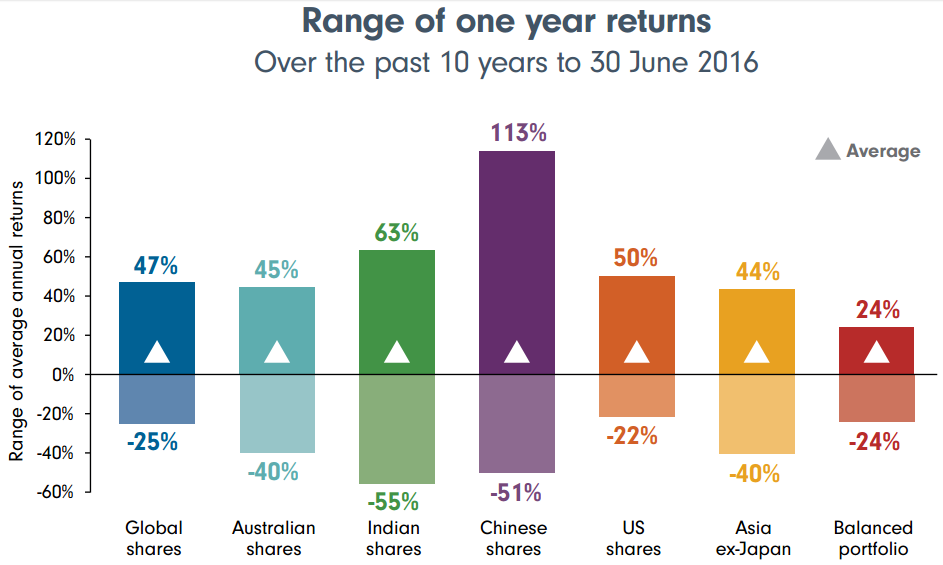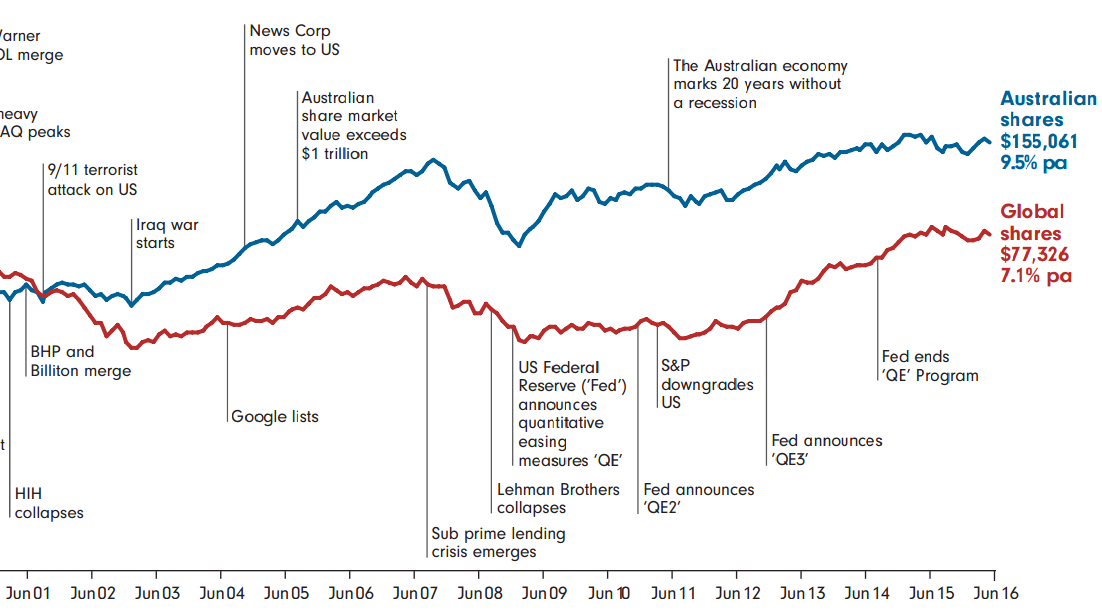
In the above data collected by Fidelity, it is sobering to look at the range of returns that a share investor can expect over a one year period. By setting stop losses, you can help protect yourself from the very worst of declines – but even with this protection, there will be some bad investment years. Lets look at the worst investment year for Australian Shares shown above (-40%). Even with stop losses, your portfolio might lose 10-25% due to prices rapidly falling before you can act. This is a major hit on your savings and during the 2008 GFC many experienced losses in their investment and superannuation savings that have turned them off share investment forever. This, in hindsight, has not been the best decision as cash returns have been relatively low and, up till June 2016, median balanced funds have improved 86% since this global financial crisis.
But volatility is not for everyone – You must be able to sleep at night!
This week, Slack Investor just had the shock of one of his stocks dropping in price by 37% on an earnings update. Price swings like this on your hard-earned investment dollars are hard to take and the volatility of the stock market – particularly with individual companies – make share investment a difficult environment for many.
To Slack Investor this is was not great news and though I prefer to make my investment decisions at the end of each month, the price revision has triggered the “not very slack” procedure of a review of this stock. Are the companies earnings still forecast to grow? There is now a daily review of this stock – with a view to sell. The correction may be an over reaction … or just the start of more bad news.
The things that protect me in these moments are diversification and the fact that Slack Investor is a long term investor. There are always at least 20 stocks or managed funds in the Slack Portfolio.
Although at the time of buying, by doing a bit of research on past and future earnings, I am convinced that each individual company will be an enormous contributor to the retirement fund. However, I have been investing long enough to know that things don’t always pan out as forecast … and I have realized that it’s not necessary to get all your investment decisions right … just so long as you get a good portion of them right!

Investing can be tricky at times and during times of market volatility it is useful to take the long view. The 15-year extract above (Shown on a compressed Logarithmic scale)- from Fidelity – indicates what would happen to a $10 000 investment over 30 years in index funds in various markets. For Australian shares the average yearly return is 8.5% over 30 years – but there were some boom times over this time frame. Over a shorter period, Canstar reports a 10-year average return for the Australian Index of 5.5% compared to the, admittedly risk free, cash option of 3.1% over 10 years.
Particularly in these times of low bond and cash yields, if you can accept the volatility of the share market, be willing to live with the occasional investment mistake and have a diverse list of well-managed growing companies in your portfolio – take a deep breath and you will be OK!

